THE FLORA AND FAUNA OF THE PARK
This page is 'work in progress'
If you have any good wildlife pictures taken in the Park that you would be happy to share - animals or plants, big or small - please get in touch with us. Please see the 'Contact Us' link above.Acknowledgements
We are very appreciative of the help with the development of this page given by members of the Wickford Wildlife Society and by Mark Williams, (former) Park Ranger, The Wick Country Park.Useful Reference Information
The Park's Habitats
Situated adjacent to open countryside and developed from what were once active arable fields, the Park offers a range of habitats that collectively attract a huge diversity of of both plants and animals. Those habitats include:- open meadows
- mature hedgerows
- planted woodland areas
- scrublands
- the lake
- an open stream, and several smaller ponds
- bird-boxes
- the World War II pillboxes
- a botanical specialist from the Wickford Wildlife Society has even spotted rarely-seen plants growing through the gravel on the borders of the private staff car-park!
- a project was completed in 2015 for the introduction of insect-friendly cladding to the storage container
- a project concerning the development of some of the open meadowland to make it more appealing to skylarks was completed in 2020.
Every year the Friends of The Wick Country Park organise events at the Park that are designed to enable the general public - especially the children - to 'get closer' to the Park's wildlife. Towards the end of this page, we have reproduced a report on one of these events as an illustration of specific and dated sightings at the Park.
The Birds, Insects, and Other Animals of The Wick Country Park
The Lake and its environs
Other waterways
Text and pictures in preparationHedgerows and Scrub
 |
 |
| During January and February, you may see large numbers of both Fieldfares (left) and Redwings (right) visiting the Park in search of food and stocking up on fuel for
their long flight back to Scandinavia. Their usual source of food is berries, and the birds can normally be seen gorging on the red berries of the hawthorn bush. They also have a liking for soft fruit, especially
fallen apples. When the weather is better and the ground is neither hard nor covered in snow, they will feed on insects, worms, snails and slugs but they will be most noticed in the trees and bushes. |
|
 |
 |
| Robin | Chiff Chaff |
 |
|
| A pygmy shrew, which is the smallest mammal found in the UK. It is in fact smaller than some of our insects, and can sometimes be found sleeping in the burrows of some beetles.
It is approximately 60mm from tip of nose to base of tail, with the tail being around 40mm long. As you will agree, in size it is very small. Having such a tiny body, the pygmy shrew needs to consume food at regular
intervals in order to maintain its body temperature. In fact it needs to eat every two hours otherwise it may die. For this reason, when you see one they are usually frantically searching for their next meal. They
generally eat woodlice, spiders and insects and can normally be found around the hedgerows. A fully grown pygmy shrew is about a quarter of the size of a house mouse. The average weight is around 4 gm - about the same
as a penny coin. In the autumn they put on a thicker coat of fur, but this is no guarantee of surviving the cold winter months. They are often referred to as "annuals" since their life span, at best, is around 15
months. |
|
Open Meadows
 |
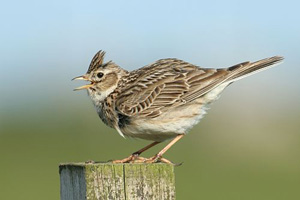 |
| Skylarks - in flight and at rest. They were once very common at the Park. Indeed, this lovely and familiar bird forms the basis of our Logo, and we also
name our two 3K races after them - see the Our Events page. Sadly, they are now rarely seen as the charactersitics of the open areas have changed as the Park has matured. Skylarks like open
farm-land. The good news is that a project has been completed to seed part of the open meadows especially for the benefit of the Skylarks! |
|
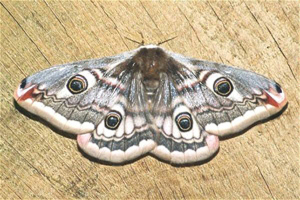 |
 |
| Emperor Moth |
Speckled Wood Butterfly |
 |
 |
| Speckled Wood Butterfly |
Wasp Spider on web |
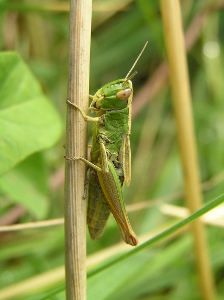 |
 |
| Common Green Grasshopper | Common Lizard |
The Planted Woodlands
Text and pictures in preparationThe Plants of The Wick Country Park
The Lake and its environs
Text and pictures in preparationOther waterways
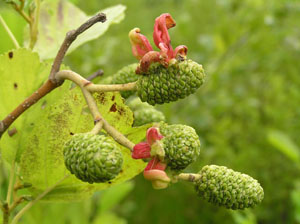
|
 |
| Found in the 'Alder Grove', a marsh area adjacent to the North Benfleet Creek in the north-east corner of the Park - Alder cones with galls caused by alder tongue fungus Taphrina Alni | Also in the Alder Grove, but this photo was taken in Summer, when the sedges were in full flower. |
Hedgerows and Scrub

|
 |
| Spindle Berries | Robin's Pincushion Gall (caused by a gall wasp) |
 |
|
| Hazel catkins are abundant in late Winter |
Open Meadows
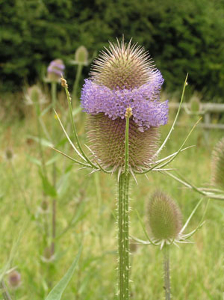
|
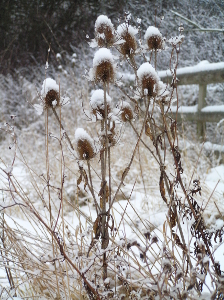 |
| Teasels - in flower in Summer they are great for attracting skylarks! But in a snowed-up winter they make a lovely picturesque photo! |
|
The Planted Woodlands
Text and pictures in preparationFurther References to the Park's Wildlife
For further information about the plants and animals found in the Country Park, please refer to these pages on this website:Nature Quest
Bird Song Walk
Monthly Nature Walks
Crickets & Dragonflies
Yule Ramble